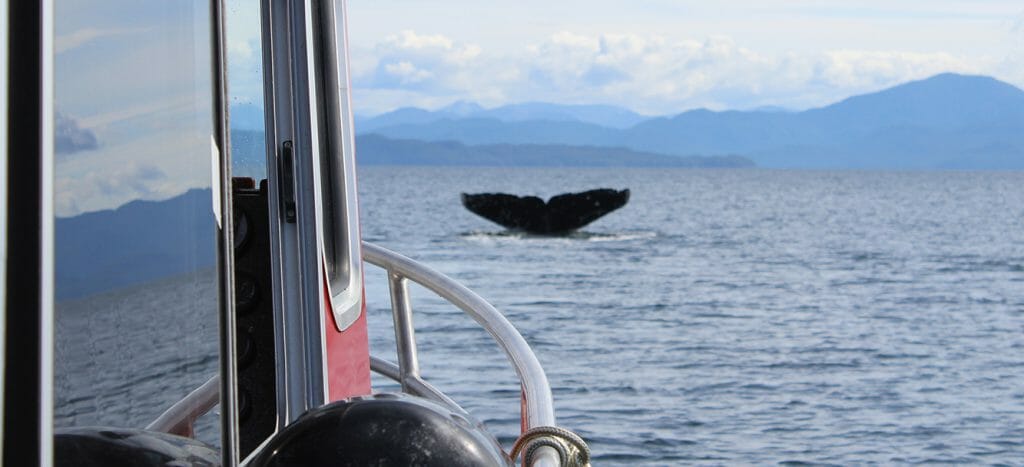Estimated Reading time

3 Mins
New Research Platform Creates Greater Understanding of Whales

by Janie Wray and and Eric Keen
This article was originally published in the Fall 2017 issue of Amhaw Gitga’at and appears courtesy of Hartley Bay Council and Gitga’at Nation.
Early this spring, a new Gitga’at Cetacean Research Station was built on the south tip of Fin Island. Thank you to Marven Robinson and all the Guardians, Chris Stewart, Brodie Danes, Gary Robinson, Tyrone Reece, Dominic Robinson, Nicole Robinson, Archie Dundas, and Cam Hill for your help and support! As part of the continued partnership between the Gitga’at First Nation and the North Coast Cetacean Society, this station will allow us to better understand whale abundance in Squally Channel, Otter Pass, between Fin and Pitt Island, and a glimpse into Lewis Pass. For years the Guardians have been conducting marine surveys in this part of the Territory, but this is the first time that we’ll be able to scan for whales during all daylight hours May through September. So far the results and the experience of having such close encounters with whales and witnessing so many interesting behaviours from this platform has been truly outstanding!

Using new technologies developed specifically for the Fin Island Research Station, we conduct standard visual surveys every hour as well as dedicated focal follows of whales and ships, all from the remote vantage of the land-based platform. Among the project’s many goals are: 1) Estimating the abundance of whales; 2) An updated assessment of ship-strike risk for humpback whales, fin whales, and orcas that use Squally Channel; 3) A new way of studying the behavioral response of whales to shipping; and 4) Providing a visual record of whale densities and behaviors with which to calibrate our acoustic dataset. This will allow us to one-day track whales acoustically and assess their abundance and interactions with ships using sound alone.
We have seen an incredible number of whales already, suggesting this corner of Gitga’at territory may be more important than we had imagined. Going into the 2018 season we are hoping that a number of students and other community members will spend some time with us at the station.
The location of this station is also in line of sight with 4 new hydrophones that have been installed in Squally Channel. These hydrophones will allow us to determine the location of the whale by sound alone, in a process called triangulation. Now, with the addition of the station on Fin Island, we are a step closer to tracking the movement and behavior of whales by combining underwater acoustic data and visual surveys that provide details on the whale’s surface behaviour. This information will be imperative to determine the effects of ambient noise on the behavior and feeding strategy of whales, and to assess the possibility of ship strikes if there is an increase in large vessel traffic in the area.
We have seen an incredible number of whales already, suggesting this corner of Gitga’at territory may be more important than we had imagined. Going into the 2018 season we are hoping that a number of students and other community members will spend some time with us at the station. Having worked in the area for over 15 years, I can honestly say that the days spent on Fin Island are among some of the best whale memories I now have; from bubble net feeding just meters from shore, to breaching in all directions, and that special moment when one humpback noticed us watching from the rocks, spy-hopped only feet away, and made eye contact. It’s been a summer of unforgettable gifts – here’s to many more!
Read the full issue of Fall 2017 Amhaw Gitga’at here.
Coast Funds is proud to support the operations of Gitga’at Fisheries, Guardian Watchmen, and Lands and Marine Programs. For more stories about the Gitga’at Guardians and their work see Gitga’at Guardians: Sustaining a Way of Life and Gitga’at Guardians: Using Science to Safeguard their Territory.
